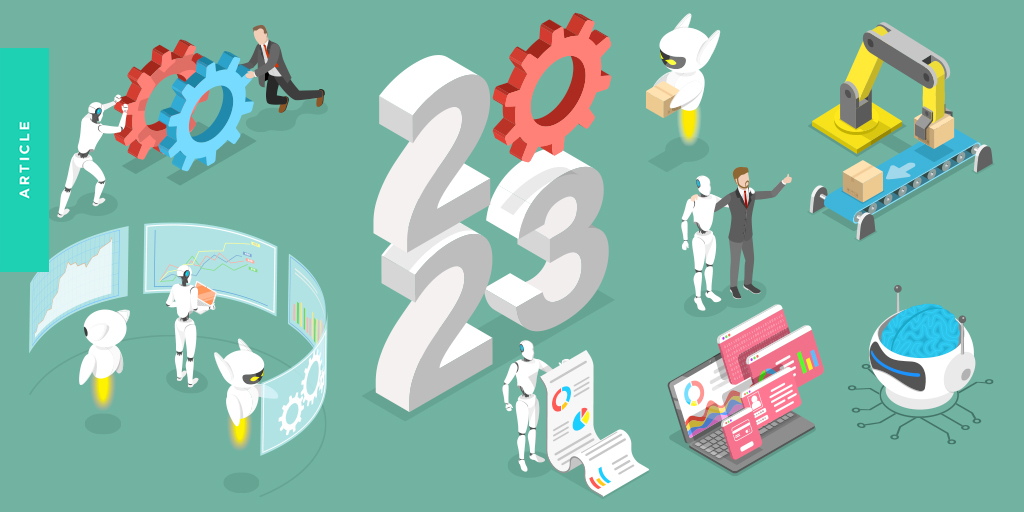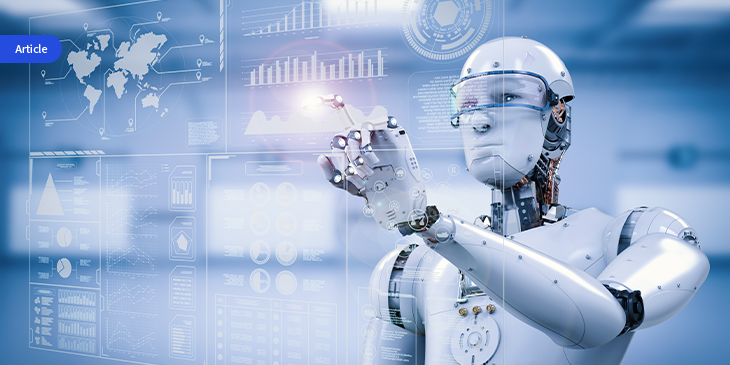See the Biggest Automation Trends for 2023
Defined as “the creation and application of technology to monitor and control the production and delivery of products and services,” automation is here to stay. Though a broad term, how exactly should we expect to incorporate automation in business processes throughout next year? Take a look at the top 10 trends that will be popular in 2023.
#1. Robotic Process Automation
Robotic process automation (RPA) will see greater use and popularity next year. RPA creates software robots that mimic human actions while interacting with digital systems. For example, RPA can help with data migration or answer basic queries at a help desk.
RPA is beneficial because it can be used to complete repetitive tasks. This allows humans to focus their energy on higher-value jobs.
#2. Low-Code and No-Code Platforms
Low-code development platforms (LCDP) and no-code development platforms (NCDP) can be used to develop complex applications. They require little to no experience with coding and programming. Examples include Appian, Microsoft PowerApps, Salesforce Lightning, Airtable, Shopify, and Zoho Creator. These platforms are hugely beneficial for IT teams because they boost productivity, helping accomplish more in less time and for a lower cost.
#3. Generative AI
The term generative AI refers to artificial intelligence that uses unsupervised learning algorithms to create new digital content. It can help with processes such as digital image correction and may improve data augmentation for robotics process automation.
While generative AI is expensive, it can aid in risk management and help robots deal with more abstract concepts.
#4. Collaborative Robots
The next 2023 automation trend is collaborative robots. Collaborative robots (sometimes called cobots) can learn multiple tasks to help humans. Since autonomous robots work independently and are only capable of doing one job, this makes collaborative robots able to offer greater value to people.
Cobots are designed in such a way that enables them to safely work alongside humans. They’re also cost-effective, making them a good option for smaller manufacturers.
#5. DevOps Testing
Continuous testing in DevOps tests the software you’re trying to create at every stage of the development life cycle. Continuous testing marketing is estimated to grow from $1.15 billion in 2018 to $2.41 billion in 2023.
When you use continuous testing, developers can access the constant feedback they need, making the entire process more time effective. And at the end of the day, your software will be of higher quality.
#6. Augmented Intelligence
Augmented intelligence is a design pattern that uses historical data to make a prediction. A human then makes the final choice. Augmented intelligence is different from artificial intelligence — augmented intelligence retains the human element, while artificial intelligence does not.
By using augmented intelligence, you can enjoy a range of benefits including a greater sales volume and more accurate decision-making. You might use augmented intelligence in marketing to predict user patterns or risk management in the financial sector.
#7. Natural Language Processing
Natural language processing (NLP) creates machines that can understand and respond to voice or text. Think instant language translation, smart assistants like Alexa, or how your inbox automatically sends new messages to filters — these all fall into the category of NLP.
You can use NLP in your business in a myriad of ways. Monitor your brand mentions on social media. Let a chatbot take over basic customer service questions. Or extract text where needed.
#8. Intelligent Automation
2023 will likely bring a faster adoption of intelligent automation (IA) in small and medium businesses (SMBs). Intelligent automation combines robotic process automation with other artificial intelligence technologies. This type of automation is a powerful tool that can automate almost any business task.
#9. Covering Gaps
It’s no secret that nearly every business is understaffed. Research from Zippia shows that four million Americans are quitting their job each month in 2022. This is an area where intelligent automation can help.
Small and large businesses alike are beginning to rely on automation to streamline their hiring process and save time on the job for the employees they still have. Intelligent automation can fill in the gaps left by the Great Resignation.
#10. Sustainability
The final automation trend we expect to see next year is sustainability. Companies are beginning to implement process assessment and discovery to use automation in a way that’s more sustainable — helping improve efficiency and advancement long-term.
Content created and provided by ONEAFFINITI.












